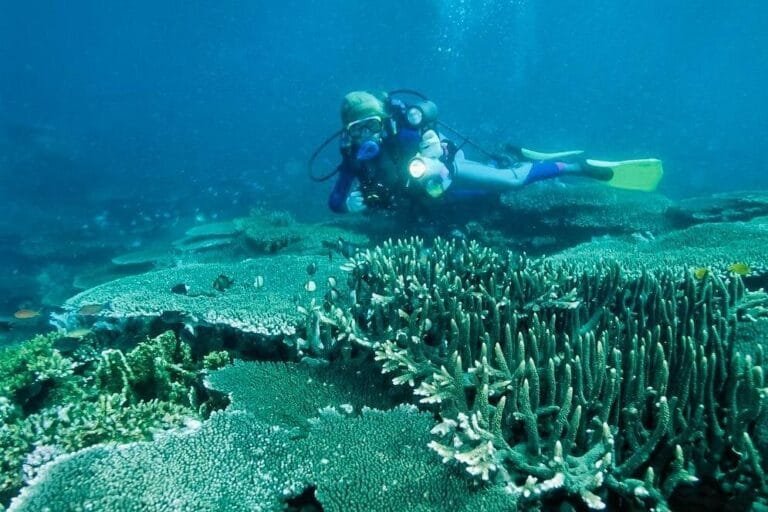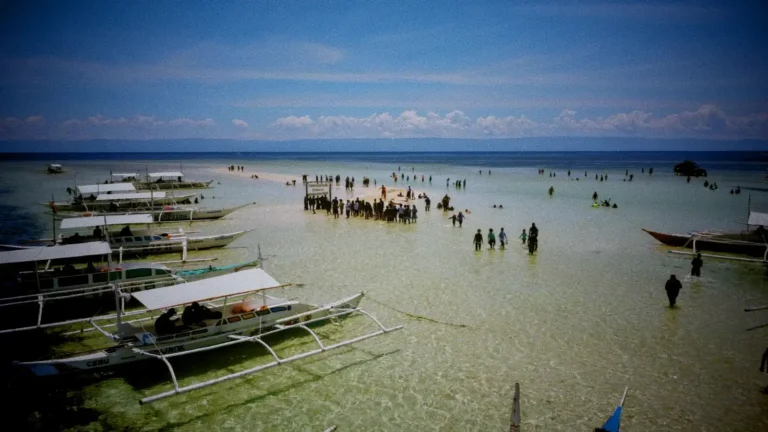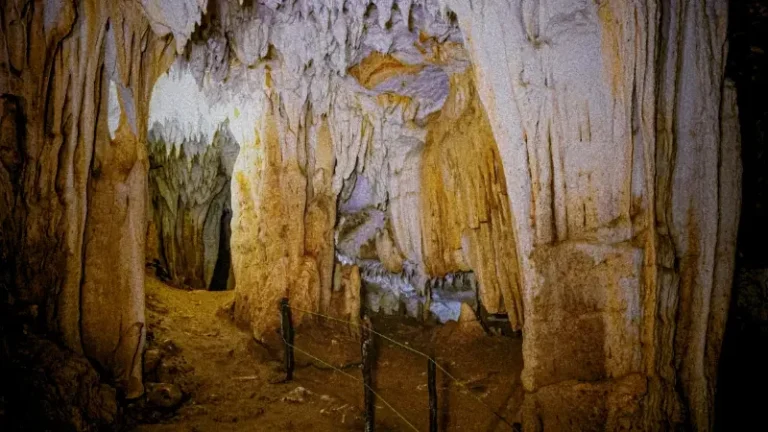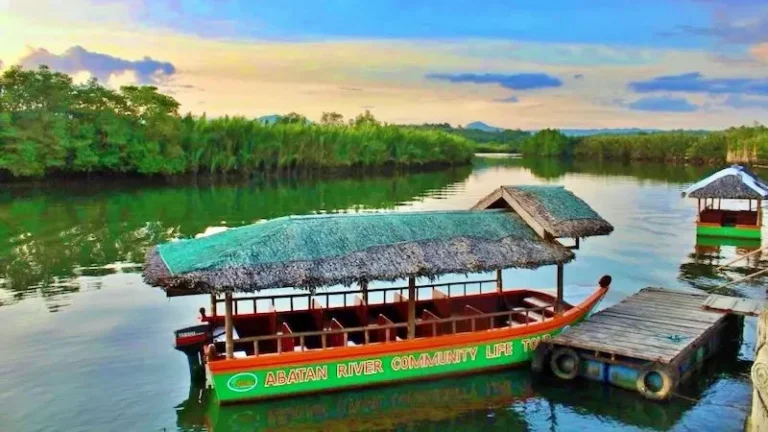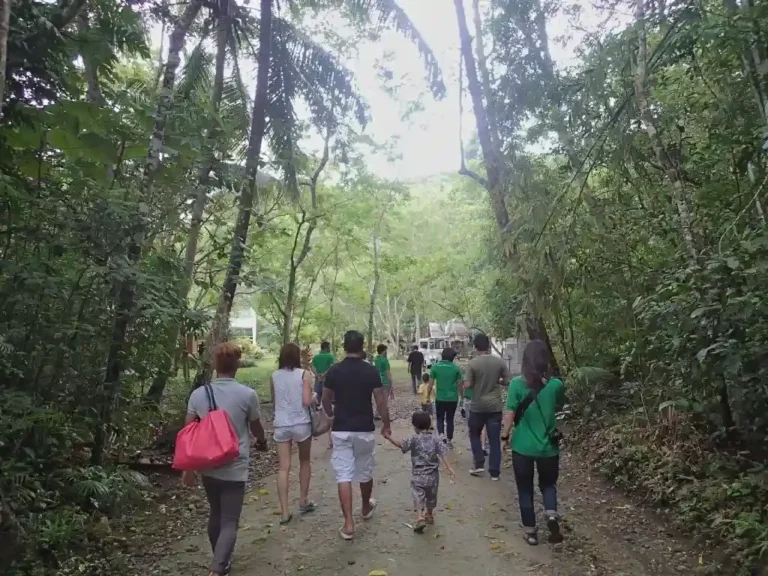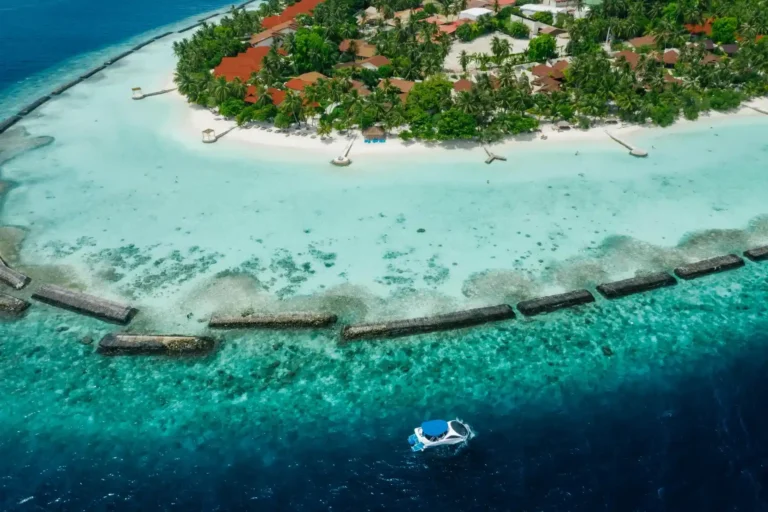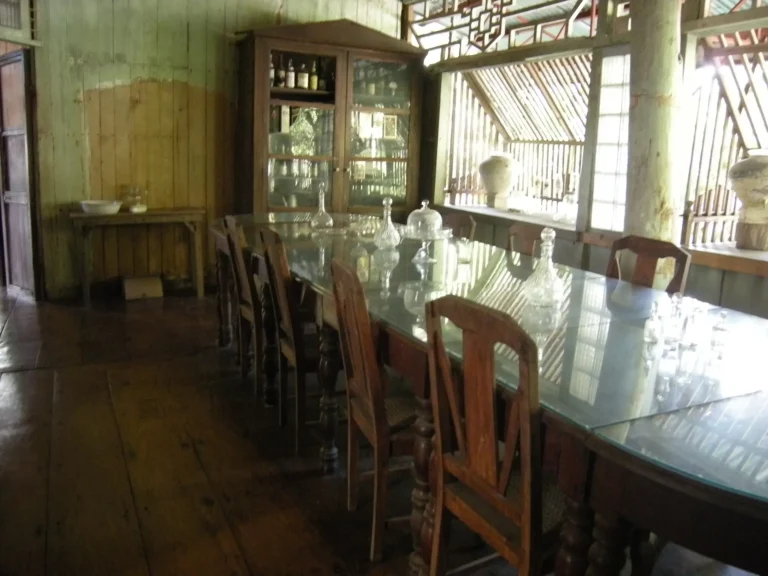Bohol Bus Routes & Transport Guide: Navigate Paradise Like a Local in 2025
Standing at Tagbilaran Integrated Bus Terminal at 5:30 AM, watching dozens of colorful jeepneys and buses prepare for their daily journeys across Bohol’s 4,821 square kilometers, you witness the heartbeat of island life. While tourists pay ₱3,000-5,000 for private transfers to the Chocolate Hills, locals make the same journey for just ₱45 on public transport – and often enjoy better conversations and more authentic stops along the way.
Bohol’s transport network connects 1 city and 47 municipalities across diverse terrain ranging from coastal plains to interior mountains. This system moves over 200,000 passengers daily, from farmers heading to weekend markets to tourists discovering hidden waterfalls that private tours never visit.
Understanding Bohol’s transport unlocks access to pristine beaches in Anda, secret cave pools near Antequera, and mountain viewpoints overlooking the famous Chocolate Hills – all while supporting local communities and experiencing the genuine hospitality that makes Bohol special beyond its famous tarsiers and geological wonders.
Ready to explore Bohol? Book your adventure now! [Book on Klook] [Check Viator] [Browse GetYourGuide]
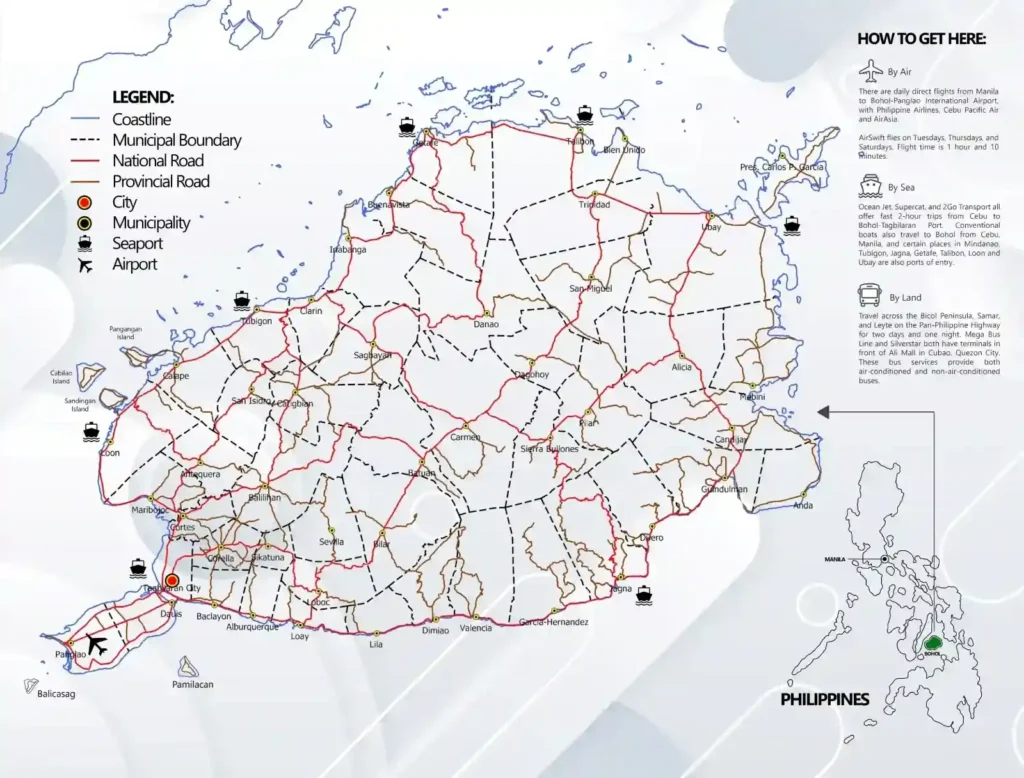
Why Mastering Bohol Bus Routes Changes Everything
Bohol’s compact island geography makes efficient transportation essential for experiencing its incredible diversity within limited vacation time. The island spans approximately 165 kilometers east to west and 64 kilometers north to south, with attractions scattered across distinct regions that each offer unique experiences.
Smart travelers who understand Bohol’s transport system typically explore 3-4x more destinations compared to those relying solely on organized tours or expensive private transfers. More importantly, public transport provides access to authentic experiences – local festivals, family-run restaurants, and pristine natural areas where you might be the only tourist.
The transport network combines practical efficiency with cultural immersion. Modern buses connect major tourist areas with air-conditioned comfort, while traditional jeepneys reveal the island’s rural character and provide opportunities to interact with Boholano families going about their daily lives.
Unlike many tropical destinations where public transport serves only locals, Bohol’s system actively accommodates tourists while maintaining authentic Filipino character. Route signs include English descriptions, drivers often speak basic English, and schedules align with major attraction operating hours.
Limited Bohol slots available – secure your spot today! [Reserve Now] [Check Dates] [Compare Prices]
“Taking the jeepney to Anda instead of a private tour saved us ₱4,000 and we discovered three hidden beaches that weren’t on any tourist map – it became our favorite part of the whole trip!” – Solo Traveler from Germany ⭐⭐⭐⭐⭐
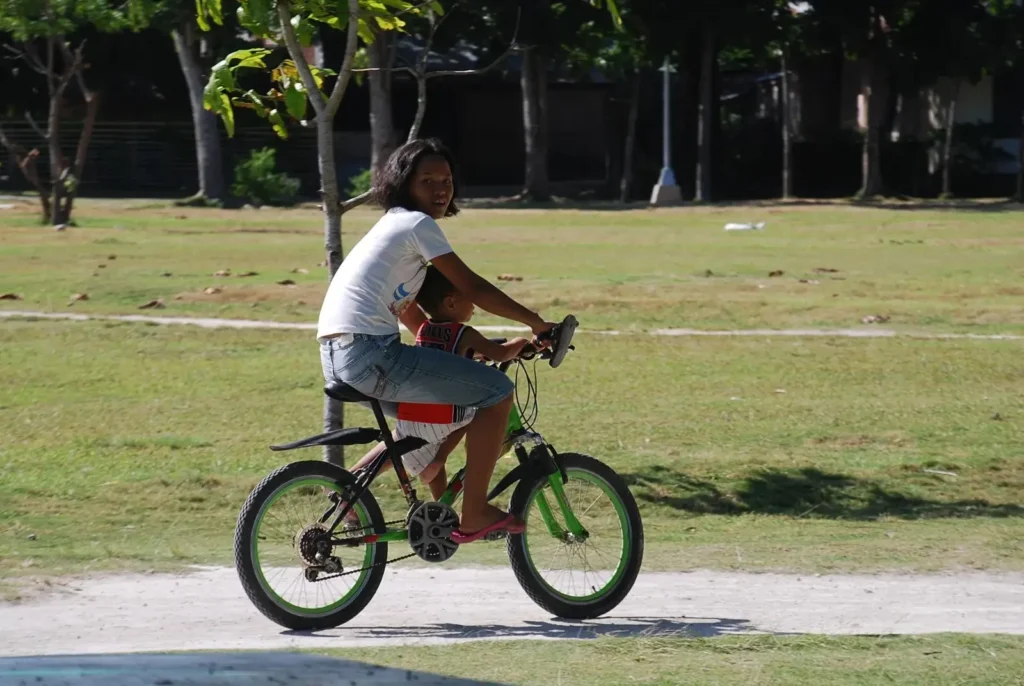
Book Your Bohol Transport Solutions
🚌 Reserve Private Transfers & Island Transport ✅ Professional drivers with local knowledge 🛡️ Air-conditioned vehicles with full insurance 📱 Flexible scheduling and hotel pickup service ⏰ Peak season transfers book weeks ahead 👉 Check Transfer Availability – Skip the transport hassle!
Understanding Bohol Bus Routes Network
Bohol’s transportation system operates through four integrated networks that provide comprehensive coverage from urban centers to remote barangays across the island’s diverse geography.
Tagbilaran City Hub serves as the primary transport nexus, with the Integrated Bus Terminal connecting all major destinations. Modern buses and traditional jeepneys radiate outward from this central point, reaching every municipality on the island through scheduled services.
Provincial Bus Routes connect major tourist destinations like Carmen (Chocolate Hills), Loboc (river cruises), and Panglao (beaches) using comfortable vehicles with fixed schedules and standardized fares that eliminate confusion and overcharging.
Municipal Jeepney Networks provide local access within each town and surrounding barangays. These colorful vehicles follow established routes but operate more flexibly than buses, often detouring to accommodate passenger requests or special destinations.
Specialized Tourist Services include tricycles for short distances, habal-habal motorcycles for accessing remote attractions, and boat connections for island hopping adventures. Understanding when to use each option optimizes both cost and convenience.
The system’s integration means seamless connections between different transport types. A typical Chocolate Hills journey might combine a Tagbilaran city jeepney, provincial bus to Carmen, and local tricycle to viewing decks – all coordinated through established schedules and transfer points.

Best Bohol rates with free cancellation – book risk-free! [Book Klook] [Try Viator] [See GetYourGuide]
Tagbilaran City Transport Hub: Gateway to Bohol Adventures
Tagbilaran serves as Bohol’s transportation heart, with the Integrated Bus Terminal located along Carlos P. Garcia Avenue providing organized departure points for all major destinations. This modern facility consolidates services that were previously scattered across multiple locations throughout the city.
Major Routes from Tagbilaran Terminal
Tagbilaran to Carmen (Chocolate Hills Access)
- Distance: 55 kilometers
- Travel Time: 1.5-2 hours
- Operators: Multiple jeepney and bus cooperatives
- Schedule: Every 30 minutes from 5:00 AM to 6:00 PM
- Fare: ₱45-60 depending on vehicle type
- Connection: Local tricycles to viewing decks (₱50-100)
Carmen serves as the gateway to the famous Chocolate Hills, with regular services ensuring easy access to this UNESCO World Heritage site candidate. The journey showcases Bohol’s interior landscapes, passing through rural communities and rice fields before reaching the limestone hill formations.
Tagbilaran to Panglao (Beach Paradise)
- Distance: 18 kilometers
- Travel Time: 30-45 minutes
- Operators: Frequent jeepney services
- Schedule: Every 15-20 minutes from 5:00 AM to 9:00 PM
- Fare: ₱25-35
- Route: Via Dauis Church and Hinagdanan Cave
This heavily traveled route connects the provincial capital with Bohol’s premier beach destination. Services operate frequently throughout the day, accommodating both local workers and tourists visiting Alona Beach and surrounding resort areas.
Tagbilaran to Tubigon (Cebu Ferry Connection)
- Distance: 62 kilometers
- Travel Time: 1.5-2 hours
- Operators: Regular bus services
- Schedule: Coordinated with ferry arrivals/departures
- Fare: ₱65-80
- Connection: Ferries to Cebu (₱200-400)
Tubigon serves as an alternative ferry point to Cebu, often less crowded than the main Tagbilaran port. This route provides scenic views of Bohol’s northern coastline and rural agricultural areas.
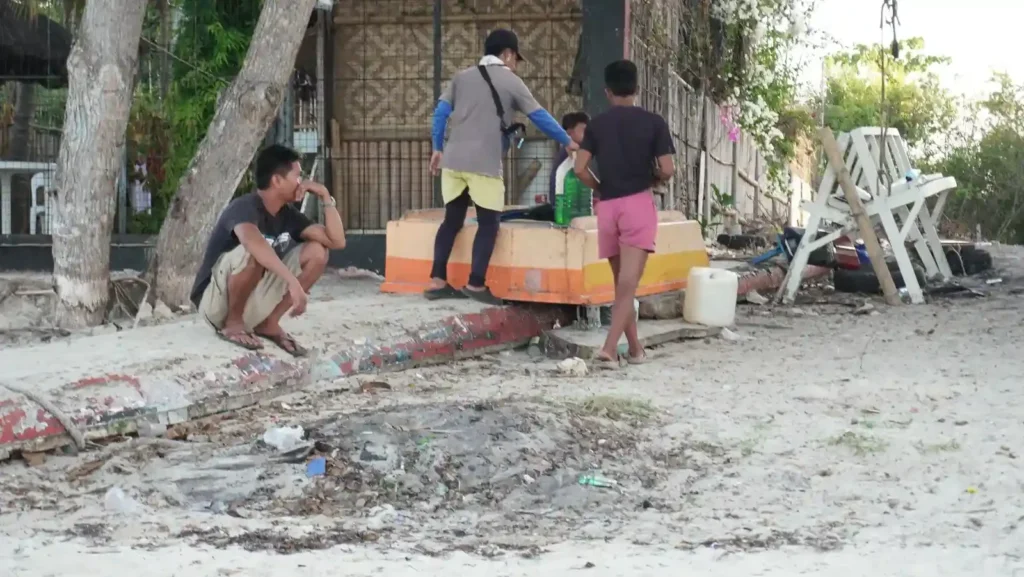
Join 1,000+ happy travelers – book yourBohol tour today! [Book Now] [Read Reviews] [Compare Options]
Tagbilaran Terminal Facilities
The integrated terminal features organized boarding areas, ticketing counters, and basic amenities that improve the public transport experience compared to traditional street-side pickups.
Terminal Features:
- Designated loading zones for each destination
- Covered waiting areas with seating
- Basic food vendors and convenience stores
- Clean restroom facilities
- Security presence and CCTV monitoring
- Information desk with route and schedule details
Regional Transport Networks by Destination
Chocolate Hills Region (Carmen, Sagbayan, Batuan)
The Carmen area operates extensive local transport connecting various Chocolate Hills viewpoints, adventure parks, and cultural attractions scattered across the region’s 50+ square kilometers.
Carmen Town Center to Chocolate Hills Complex
- Local Transport: Tricycles and habal-habal
- Distance: 3-8 kilometers depending on viewpoint
- Fare: ₱50-150 per trip or ₱300-500 for waiting service
- Options: Multiple viewing decks accessible via different routes
Sagbayan Peak Eco-Adventure Park Access
- Connection: Van services from Carmen town center
- Travel Time: 20-30 minutes
- Fare: ₱100-150 per person
- Features: Higher elevation viewpoints and adventure activities
No posts
Loboc River Area Transport
The Loboc region combines river cruise access with forest reserve exploration and cultural heritage sites, requiring coordination between different transport modes.
Start planning your perfect Bohol day trip now. [Book Tour] [Check Availability] [See Details]
Tagbilaran to Loboc Town
- Distance: 28 kilometers
- Travel Time: 45 minutes to 1 hour
- Schedule: Every 30-45 minutes from 6:00 AM to 7:00 PM
- Fare: ₱35-45
- Attractions: River cruises, hanging bridge, tarsier sanctuary nearby
Loboc to Bilar (Man-Made Forest)
- Connection: Local jeepneys and tricycles
- Distance: 12 kilometers
- Travel Time: 20-30 minutes
- Fare: ₱25-35
- Route: Through the famous mahogany tree tunnel
Panglao Island Network
Despite bridge connections to mainland Bohol, Panglao maintains its own transport character with beach-focused services and resort connections.
Internal Panglao Routes:
- Tagbilaran-Alona Beach: Direct jeepneys every 20 minutes (₱35)
- Panglao Airport Connections: Regular services to major resorts
- Beach Hopping: Tricycles connect different beach areas (₱100-200)
- Island Tours: Combination motorbike and boat services
Panglao to Bohol Attractions: Most Panglao-based tourists use the island as a base for day trips to mainland attractions, with early morning transport ensuring full-day exploration possibilities.
Eastern Bohol Transport (Anda, Jagna, Candijay)
Eastern Bohol represents the island’s most pristine and least developed region, where transport becomes more adventurous but rewards travelers with untouched beaches and authentic rural experiences.
Tagbilaran to Anda (Hidden Beach Paradise)
- Distance: 85 kilometers
- Travel Time: 2.5-3 hours
- Schedule: 4-5 daily departures starting 6:00 AM
- Fare: ₱80-100
- Route: Via Jagna with coastal mountain scenery
Anda’s relative isolation maintains its pristine character, with limited but reliable transport services that prevent overcrowding while ensuring access for adventurous travelers.
Jagna to Candijay (Mangrove and Cave Exploration)
- Distance: 25 kilometers
- Travel Time: 45 minutes
- Local Transport: Jeepneys and multicabs
- Fare: ₱30-40
- Attractions: Can-umantad Falls, Candijay Mangroves
Eastern Route Challenges and Rewards: Eastern Bohol transport requires more flexibility and patience, but provides access to Bohol’s most authentic experiences away from mass tourism development.
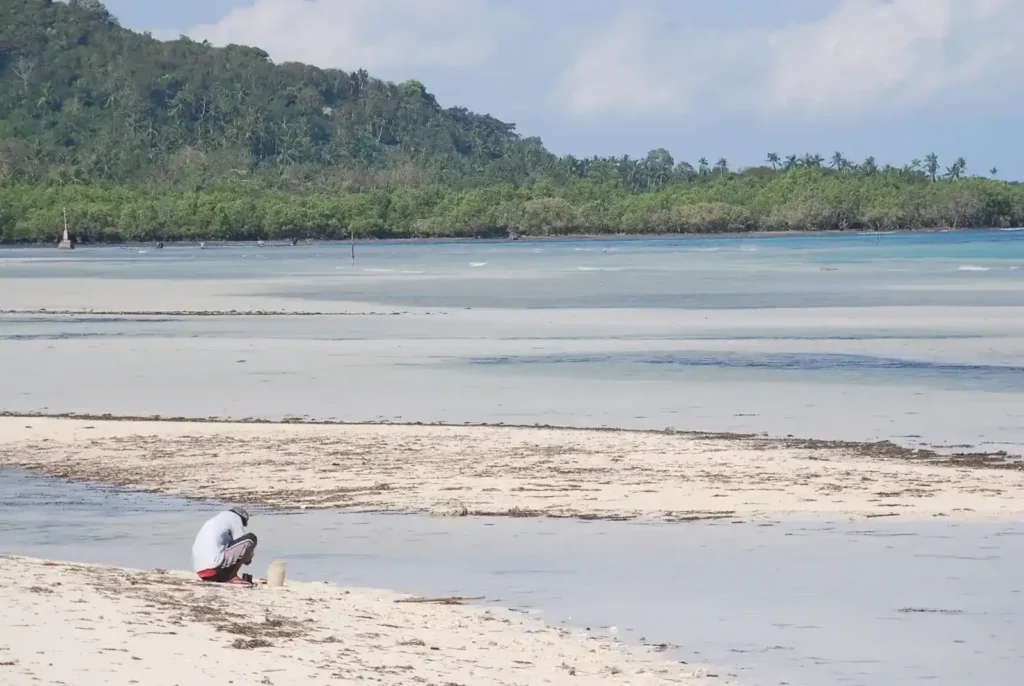
Join 1,000+ happy travelers – book yourBohol tour today! [Book Now] [Read Reviews] [Compare Options]
🏖️ Book Anda Beach Resort & Transport Package ✅ Includes round-trip transport from Tagbilaran 🌊 Private beach access and cave pool exploration 📷 Local guide services and authentic dining ⏰ Limited availability in remote paradise location 👉 Reserve Your Anda Adventure – Escape the crowds completely!
Northern Bohol Transport Network
Northern Bohol’s transport system serves both tourist attractions and commercial centers, connecting coastal communities with interior agricultural areas.
Tagbilaran to Getafe (Shortest Ferry Route to Cebu)
- Distance: 45 kilometers
- Travel Time: 1-1.5 hours
- Schedule: Regular services coordinated with ferry times
- Fare: ₱50-65
- Advantage: Less crowded alternative to Tagbilaran port
Inabanga to Danao (Adventure Park Access)
- Connection: Specialized transport for adventure tourism
- Travel Time: 1.5-2 hours from Tagbilaran via Inabanga
- Services: Coordinated with adventure park operations
- Fare: ₱100-150 including mountain access roads
Specialized Transport for Tourist Attractions
Best Bohol rates with free cancellation – book risk-free! [Book Klook] [Try Viator] [See GetYourGuide]
Tarsier Sanctuary Connections
The Philippine Tarsier Sanctuary in Corella operates coordinated transport from major hotels and the Tagbilaran terminal.
- Direct Services: From Tagbilaran every 2 hours
- Combination Tours: Integrated with Loboc River trips
- Private Options: Tricycle hire for flexible timing (₱500-800)
Baclayon Church and Heritage Route
Historical attractions along Bohol’s coast connect through regular jeepney services that double as heritage tours.
- Tagbilaran-Baclayon: Every 30 minutes (₱20-25)
- Heritage Circuit: Connections to Loboc, Alburquerque, Loay
- Cultural Integration: Transport timing allows multiple site visits
Adventure Activity Access
Danao Adventure Park Transport:
- Specialized Services: Coordinated with activity bookings
- Group Transport: Larger vehicles for adventure groups
- Safety Equipment: Transport includes gear transfer services
River and Water Activity Connections:
- Loboc River: Integrated boat and land transport
- Island Hopping: Combined jeepney and bangka services
- Waterfall Access: Habal-habal connections to remote locations
What’s Included & Transportation Costs
Limited Bohol slots available – secure your spot today! [Reserve Now] [Check Dates] [Compare Prices]
Typical Public Transport Costs:
✅ City jeepney rides: ₱8-15 within Tagbilaran
✅ Inter-municipal buses: ₱25-100 for major destinations
✅ Tricycle short trips: ₱50-150 for tourist areas
✅ Habal-habal adventures: ₱100-300 for remote locations
Additional Fees and Considerations:
❌ Terminal fees: ₱5-10 at major departure points
❌ Waiting time charges: ₱100-200/hour for private hire
❌ Special destination surcharges: ₱50-100 for difficult access
❌ Baggage fees: Usually included but large items may incur charges
Budget Planning Examples:
- Daily island exploration: ₱200-400 for multiple destinations
- Chocolate Hills day trip: ₱150-250 total transport cost
- Anda remote beach escape: ₱300-500 including connections
- Complete island circuit: ₱500-800 over 2-3 days
Alternative Transport Options
Motorbike Rentals
Availability: Widespread throughout Tagbilaran and Panglao Daily Rates: ₱500-800 for standard scooters Requirements: International driving license, passport deposit Advantages: Complete flexibility and access to remote areas Considerations: Mountain roads require experience, weather dependent.
Private Car Hire with Driver
Daily Rates: ₱3,500-5,000 including fuel and driver Advantages: Air conditioning, luggage space, local knowledge Best For: Groups of 4+, elderly travelers, luxury preferences Booking: Hotel concierge or established tour operators
Tricycle Charter Services
Hourly Rates: ₱150-250 depending on destination Half-Day Tours: ₱800-1,200 for multiple attractions Advantages: Door-to-door service, personal attention Limitations: Limited luggage space, weather exposure
Frequently Asked Questions
How reliable are bus schedules in Bohol?
Major routes to tourist destinations maintain fairly consistent schedules, especially morning departures. However, services can be delayed by weather, road conditions, or local events. Build buffer time into tight itineraries.
Can I use public transport to reach all major Bohol attractions?
Yes, though some attractions require combination transport (bus + tricycle). The most remote locations like Anda beaches and eastern waterfalls may need patience and flexibility with connections.
Is it safe for tourists to use local transport in Bohol?
Bohol is generally very safe for tourists using public transport. The local population is accustomed to visitors, drivers often speak basic English, and crime rates are low compared to urban Philippine areas.
What should I do if I miss the last bus back to Tagbilaran?
Most tourist areas have basic accommodation options for unexpected overnight stays. Alternatively, private tricycle hire for longer distances, while expensive (₱1,000-3,000), provides emergency transport.
How do I communicate destinations to drivers who don’t speak English?
Learn key destination names in Filipino pronunciation, write addresses in local script, or use translation apps. Most drivers recognize major tourist destinations by name or landmark description.
Travel Tips for Bohol Public Transport
Ready to explore Bohol? Book your adventure now! [Book on Klook] [Check Viator] [Browse GetYourGuide]
Timing Strategy: Start early for maximum flexibility. First departures often connect better with onward services and provide cooler travel conditions during hot months.
Cash Management: Carry small bills and coins. Many services cannot provide change for large denominations, and exact fare payments speed up boarding for everyone.
Weather Awareness: The tropical climate means covered vehicles become very hot without air conditioning. Open-air jeepneys provide natural ventilation but offer no weather protection during sudden rain showers.
Cultural Sensitivity: Boholanos appreciate visitors who make an effort to understand local customs. Learn basic greetings, respect vehicle capacity limits, and be patient during unexpected delays.
Safety Preparation: Keep valuables secure in closed bags. While crime is rare, the combination of crowded vehicles and tourist visibility requires standard precautions.
Language Bridge: Download offline translation apps and learn key phrases: “Kumusta” (how are you), “Salamat” (thank you), and “Pila ka?” (how much?).
For comprehensive Bohol travel planning beyond transportation, explore our complete [Bohol Travel Guide].
Where to Stay for Optimal Transport Access
Tagbilaran City Base Staying in the provincial capital provides optimal access to all transport routes while offering the widest selection of accommodation options from budget guesthouses to business hotels.
Panglao Island Hub
Beach resort areas offer luxury amenities with easy connections to mainland attractions. Regular jeepney services ensure mainland exploration without sacrificing beach accommodation comfort.
Carmen/Chocolate Hills Area Limited accommodation options but ideal for early morning hill visits and exploring central Bohol’s rural character without daily transport from distant bases.
Anda Remote Stays For travelers prioritizing pristine beaches over transport convenience, Anda’s isolation provides authentic experiences with basic but comfortable accommodation options.
Peak Season Alert: Transport-accessible accommodation books early during December-May peak season. Reserve 6-8 weeks ahead for optimal location and pricing.
Browse our comprehensive [Bohol Hotels Guide] for detailed recommendations by area and transport connectivity.
Seasonal Transport Considerations
Dry Season Optimization (November-May): All transport operates at full capacity with reliable schedules. Dusty conditions on unpaved roads may affect comfort on longer journeys.
Wet Season Adaptations (June-October): Some remote routes may experience delays or cancellations during heavy rains. Roads to eastern attractions can become challenging, requiring flexibility.
Festival Periods: Major Bohol celebrations like Sandugo Festival (July) significantly increase transport demand. Book accommodation and plan routes well in advance during these periods.
Holiday Impacts: Filipino holidays (Christmas, New Year, Holy Week) bring massive increases in local tourism. Transport becomes crowded and may require advanced planning or alternative scheduling.
Combining Transport with Major Attractions
Chocolate Hills Circuit: Combine Carmen bus services with local tricycle hire for comprehensive hill viewing from multiple angles and elevations throughout a full day.
Coastal Heritage Tour: Use regular jeepney services to connect Baclayon Church, Loboc River, and Blood Compact Shrine in a logical cultural exploration sequence.
Beach and Adventure Mix: Base in Panglao with day trips using public transport to interior attractions, returning each evening to beach resort comfort and amenities.
Eastern Discovery Route: Plan 2-3 days exploring Anda, Jagna, and Candijay areas, using local accommodation to minimize daily transport requirements while maximizing authentic cultural contact.
Discover more combination strategies in our comprehensive [Things to Do in Bohol] guide for creating efficient, memorable itineraries.
What Transport Users Are Saying
Travelers consistently praise Bohol’s transport network for friendliness and scenic value, while noting the importance of patience and flexibility for optimal experiences.
“The jeepney ride to Carmen took longer than expected but we saw authentic rural Bohol and the driver stopped so we could buy fresh mangoes from roadside vendors – it was perfect!” – Adventure Couple from Australia ⭐⭐⭐⭐⭐
“Using public transport to reach Anda beach saved us thousands of pesos and we met wonderful local families who invited us for dinner. The extra travel time became part of our best memories.” – Budget Traveler from Canada ⭐⭐⭐⭐⭐
Reliability Rating: 4.3/5 for major tourist routes, with users appreciating scenic journeys and cultural interactions that private transport cannot provide.
Limited Bohol slots available – secure your spot today! [Reserve Now] [Check Dates] [Compare Prices]
Best Transport Seasons and Timing
Optimal Travel Months (December-February): Cool temperatures, minimal rainfall, and peak service frequency make this ideal for extensive public transport exploration.
Shoulder Season Advantages (March-May, November): Good weather with fewer crowds and more authentic local interactions on transport services.
Adventure Season (June-October): Wet season provides lush landscapes and cooler temperatures, though some remote routes may be affected by heavy rains.
Daily Timing: Early morning departures (6:00-8:00 AM) provide coolest temperatures and best connections. Late afternoon returns (4:00-6:00 PM) avoid midday heat while ensuring daylight arrival.
Is Bohol Public Transport Right for You?
Perfect For:
- Budget-conscious travelers seeking authentic island experiences
- Adventure enthusiasts comfortable with local cultural immersion
- Flexible itinerary travelers who enjoy spontaneous discoveries
- Solo travelers and couples wanting to meet local families
- Environmentally conscious visitors supporting sustainable tourism
Consider Private Options If:
- You’re traveling with mobility restrictions requiring assistance
- Your schedule demands precise timing for connecting flights
- You prefer maximum comfort over cultural authenticity
- You’re traveling with large groups requiring coordination
Cultural Readiness: Basic Filipino phrases and cultural awareness significantly enhance public transport experiences, though English communication works in most tourist-relevant situations.
Physical Considerations: Some routes involve walking between connections, climbing into elevated vehicles, and potentially crowded conditions during peak travel times.
Book Your Bohol Transport Adventure
Bohol’s integrated transport network provides the foundation for discovering one of the Philippines’ most diverse and beautiful islands while supporting local communities and experiencing genuine Boholano hospitality. From the geological wonders of the Chocolate Hills to pristine beaches in Anda, understanding these systems unlocks authentic adventures impossible through conventional tourism.
The island’s transport culture reflects the warmth and ingenuity that characterize Boholano society. Every jeepney ride becomes an opportunity for cultural exchange, every shared journey creates connections with local families, and every scenic route reveals landscapes unchanged for generations.
🚌 Plan Your Complete Bohol Transport Strategy
✅ Budget-friendly access to hidden gems and famous attractions
🌿 Support local communities through sustainable travel choices
🗺️ Experience authentic island culture beyond tourist bubbles
⏰ Peak season requires early planning for optimal experiences
👉 Start Your Island Transport Adventure – Discover Bohol’s true character!
Start planning your perfect Bohol day trip now. [Book Tour] [Check Availability] [See Details]
The gentle rhythm of jeepney engines navigating mountain curves, the friendly conversations with fellow travelers heading to weekend markets, and the spontaneous stops at roadside fruit stands represent more than just transportation – they’re your invitation to experience the genuine heart of Bohol that makes this island paradise truly unforgettable.
Support our site by booking through our trusted partners. These affiliate links help keep this travel content free while supporting local tourism and sustainable transport development throughout Bohol.
Complete Bohol Bus & Transport Guide: Navigate Paradise Like a Local in 2025
Master Bohol’s transport system with our complete guide. From Tagbilaran to Chocolate Hills, Panglao to Anda – save money and explore hidden gems.
Bohol bus routes, Bohol public transport, Tagbilaran transport, Chocolate Hills bus, Panglao jeepney, Bohol transportation guide, how to get around Bohol, Bohol island transport
sland transport bookings and private transfer alternatives
Hotel bookings near transport hubs, tour packages, motorbike rentals Conversion Goal: Transport service bookings and convenience alternatives


